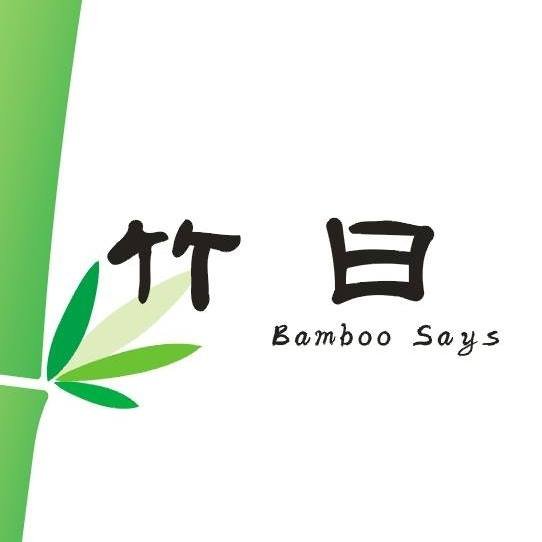Episode 8 - Climate Cuisine
Meet Bamboo: The Fastest Growing Plant in the World
Bamboo is the fastest growing plant in the world; some varieties can grow up to three feet daily. Considered invasive in some parts of the United States, it is embraced in Latin America and Asia for its use in architecture, fashion and food. In this episode, we’ll chat with Hans Friederich, the former director of the International Bamboo and Rattan Organization; Momoko Nakamura, a food educator and storyteller in Japan; Kevindra Soemantri, a food journalist in Indonesia; and Hui Ting Tsai, a bamboo weaver in Taiwan.
In this episode of Climate Cuisine, Clarissa chats with:
Hans Friederich, the former director of the International Bamboo and Rattan Organization
Momoko Nakamura, a food educator and storyteller in Japan
Kevindra Soemantri, a food journalist based in Indonesia
Hui Ting Tsai, a bamboo weaver in Taiwan who runs a bamboo advocacy site called Bamboo Says
Episode highlights:
The Enormous Potential of Bamboo
Did you know that bamboo is actually grass? It is able to regenerate itself naturally. Hans shares that there are over 1600 species of bamboo, with more yet to be recorded.
According to Hans, the natural poles of bamboo are more flexible than, yet just as strong as, steel. And because bamboo is a natural product, building structures with bamboo is more environmentally friendly than constructing with materials like steel and concrete.
Aside from architecture, bamboo can be used to make clothing. Although, Hans does warn that some ways of extracting fiber from bamboo are polluting.
Growing Bamboo in Europe
Although bamboo does best in warm and moist climates, Hans shares how he and his team are going about planting it in southern Portugal.
Weaving and Eating Bamboo in Taiwan
Hui Ting explains the intricate process behind bamboo weaving, including the necessity of choosing different varieties for different projects.
She also shares one of her favorite local varieties of bamboo to eat: green bamboo. Although this variety is tricky to harvest, given that it can only be done so at night, its tender, tasty shoots are worth the effort.
Bamboo Wares in Japan
Momoko says that in Japan, bamboo is not only used as an ingredient, but also often made into tools for cooking and eating, such as steamers, baskets, plates, and even chopsticks. She shares the practical reason that bamboo makes an excellent material for constructing these wares.
A Symbol of Spring
Momoko discusses the process behind growing and harvesting the shoots of white bamboo in Japan.
For Japanese people who eat in a seasonal pattern, bamboo shoots are also a happy and celebratory symbol of spring. Momoko shares some of the dishes bamboo shoots are incorporated in.
Diminishing Craft
Momoko admits that unfortunately, weaving and constructing bamboo wares is a diminishing craft in Japan, in part because it requires so much time and care.
There are some places known for woven bamboo wares, such as Beppu, Oita, where a community of bamboo artisans have resided for thousands of years. However, she says it’s difficult to find information about them or buy directly from them online.
Momoko also tells us about an Indigenous community in Japan that was known for bamboo craftsmanship.
Ways People Use Bamboo in Indonesia
One of the most distinct cuisines that uses bamboo in Indonesia is that of the Minahasan people from the Northern part of Sulawesi. Kevindra describes one of his favorite dishes, which uses bamboo as a cooking vessel.
Kevindra also names the Sundanese people as an ethnic group in Indonesia that uses bamboo prominently. Beyond cooking, the Sundanese use bamboo for architecture and for crafts like musical instruments.
Different Perspectives on Bamboo
Because bamboo is so widely available in places like Japan and Indonesia, it can be seen as an underappreciated resource.
However, in places like Europe, where bamboo is uncommon, it can also represent a burgeoning industry.
Guests
-

Hans Friederich
Dr Hans Friederich FRGS is a Dutch geographer with a PhD from the University of Bristol, UK. He is global Ambassador of the World Bamboo Organisation and Senior Advisor to the European Bamboo Programme which is managed by Bamboologic in the Netherlands.
He is working with the SUNx Programme in Brussels and the Malta Tourism Authority as the Registrar of the global register of climate friendly travel and tourism ambitions. Hans will also be guest lecturer in a diploma course on climate friendly tourism that is organized by SUNxMalta and the Malta Institute for Tourism Studies.
-

Momoko Nakamura
She is a former television producer of food shows, start-up founder, director of food events, and restaurant consultant. Her training is rooted in Japanese culinary practices of yesteryear, and macrobiotics.
-

Kevindra Soemantri
Kevindra Soemantri is a food journalist based in Indonesias and the Co-founder of @feastin.id.
-

Hui Ting Tsai
Hui Ting Tsai is a bamboo weaver in Taiwan who runs a bamboo advocacy site called Bamboo Says
